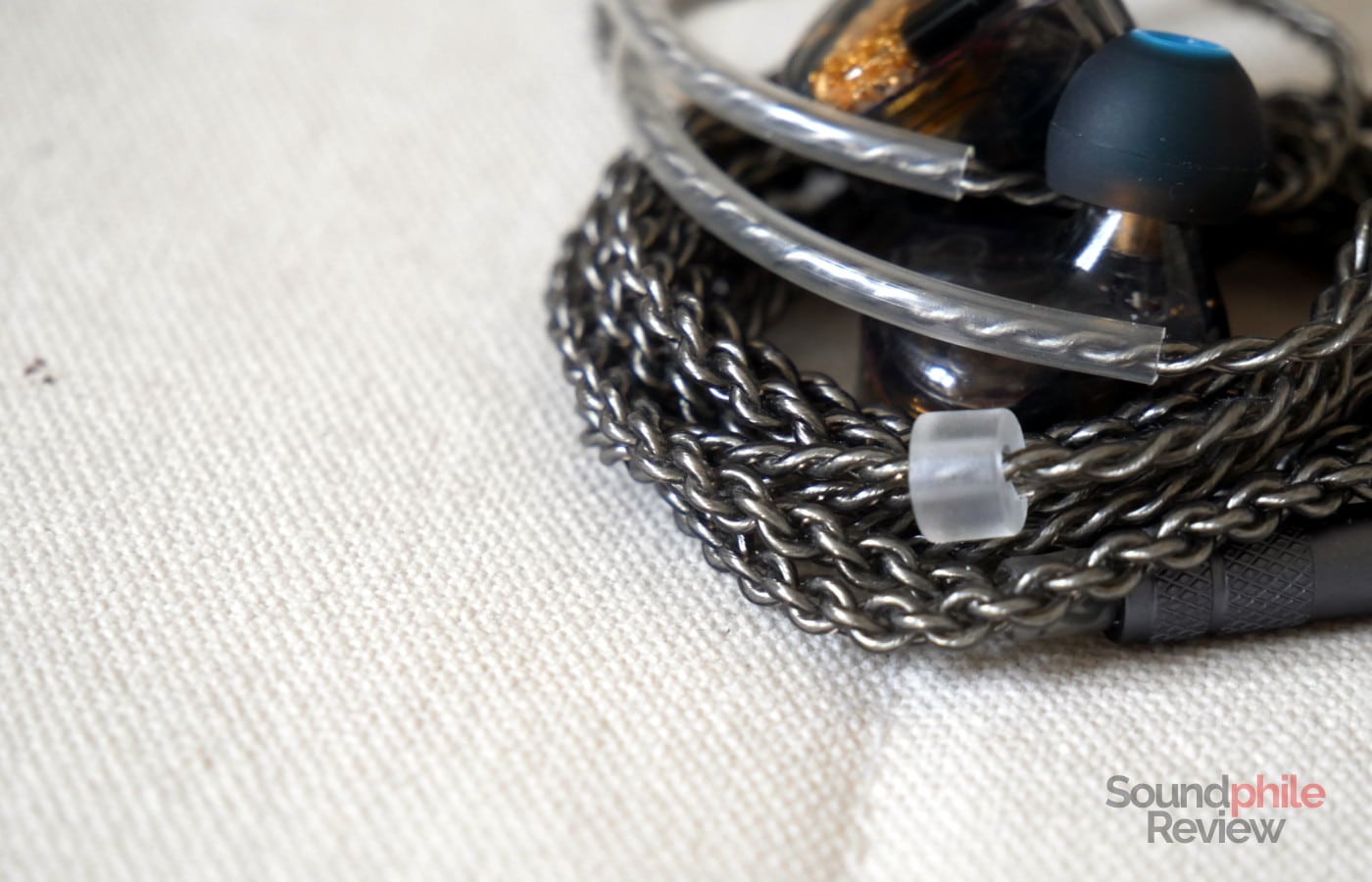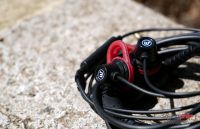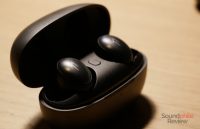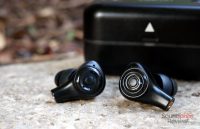The world of affordable earphones surely is going through an expansion, so multiple companies are still springing up everywhere. ApeSonic appears to be a US-based company which manufactures a lot of different products – most of them appearing to be ODM designs with custom tuning. They manufacture their earphones and headphones in China, just like everyone else, and they appear to infuse their own bit in the products in terms of how they sound. This is also true of the ApeSonic Rain, an IEM that is quite close to KZ earphones – maybe not entirely by chance, either.
Disclaimer: I received a unit through an acquaintance, who was asked to distribute a few earphones to reviewers. Additional info on the Rain, which sell for $45, is available on ApeSonic’s website.
TL;DR: recap
| Pros |
Cons |
| + Good comfort | – Peaky, unbalanced tuning
– Fatiguing treble |
Rating: 5/10
Packaging & Accessories
Packaging is very simple and includes just a set of eartips and a small bit of Velcro to keep the cable tidy (though that’s quite an uphill battle!).
Design & Comfort

The design is overall quite common and in fact it’s very close to earphones like the KZ ZS10 Pro or CCA C10, the main difference with those being the faceplate: it looks like a mix of gold particles and obsidian, with a result that’s… interesting, let’s put it like that. ApeSonic writes on their website that the shell is “solid synthetic resin”, but it’s not actually a single solid piece; in fact it’s made of two distinct pieces and it’s hollow inside.

Build quality is average for the price point: it’s good, but it’s nothing extraordinary either.
Comfort is good once you find the right eartips: the curved, IEM-like shape makes the ApeSonic Rain quite comfortable even if you have relatively small ears, though of course this is a deeply personal matter and it’s difficult to make broad statements regarding it.

Isolation is – again – average, enough to shield you from low-volume noises in a house but not enough to protect you from the sounds of a busy street, as an example.

I am most definitely not in love with the cable: it’s really tangly! It reminds me of the cables made by KZ: the four cores are braided between the jack and the Y-split, then they separate into two groups of two twisted cores each. The thing is that while it appears to be decently resistant and I actually like the metal bits like the jack housing, the cable itself is extremely prone to tangling and to kinks, so it’s a bit of a mess.
Sound & Specs
I tested the ApeSonic Rain using my Topping DX7 connected to my Drop THX AAA 789.
ApeSonic Rain |
| Frequency response | 18 – 22,000 Hz |
| Impedance | N/A |
| Sensitivity | 105 dB |
The ApeSonic Rain uses a 10 mm dynamic driver paired with one balanced armature. There’s no word on any other specification about either.
The soundstage is not extremely wide, in fact it’s entirely in the average for closed-back earphones in this range. Imaging is sufficient, with a placement of instruments that allows you to get the general direction (left, centre, right), but barely more than that. Instrument separation is marred by the tuning, so some instruments are difficult to hear due to the way the earphones sound.
Bass is surely emphasised and in fact it does come up on top of midrange by a good margin, but it also is nowhere near as emphasised as treble. In fact we may describe the Rain’s signature as being check-mark-like – ✓. As bass is produced by a dynamic driver, it sounds physical enough, with relatively long decay and satisfyingly fast transients. It doesn’t abound in details, but it has enough to give you a good feeling of what’s going on.
Midrange is weird as it is a bit in the background, but it also has quite a prominent bump in the upper area that ends up being preponderant in the sound signature. If you listen to Snarky Puppy’s Binky, trumpets are quite emphasised and penetrating, much like any other high-pitched instruments like flutes and violins. Overall, midrange has decent detail, but its weird tonality and the peaks that characterise it make it difficult to listen to.
Treble is, unfortunately, much like most other affordable earphones I’ve tried as of late: excessively emphasised and quite fatiguing, taking control at the expense of the rest of the signature. As some would say, it is “hot”. Maybe too hot though? The level of detail is fine and so is the extension, although the presence of peaks and dips makes details quite “spotty” – some are there and they’re quite evident, others are barely noticeable. The peaks are most evident in the lower region, as there’s a continuation of what happens in the midrange, but they’re also present further up.
ApeSonic Rain Comparisons
Well, the thing with the Rain is that while they’re not bad, they don’t hold a candle to the champions in the sub-$50 space, and even less in the sub-$100 space. Their treble and upper midrange performance just put them in the “average” category together with all the various KZ models and similar stuff – good value for the money in general, but not quite as great as the heavyweights in this price bracket. So the Tin HiFi T2 Plus or the old good Blon BL-03 are probably going to be a better choice.
Final Thoughts
The ApeSonic Rain are in a difficult position, as they are in a very crowded market with lots of very good competitors. Unfortunately for them, they fail to offer better value than the competition and sound like most other generic “Chi-Fi” earphones: peaky, overbearing upper midrange and treble, recessed midrange and emphasised bass. They have some interesting looks going for them, if you are into this kind of thing, but that’s about it. If you are very sure that you like this kind of tuning you can opt for these, but otherwise there are so many other good options – just check the Best of page to find quite a few.








